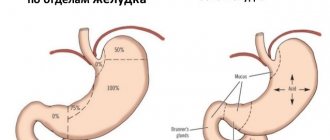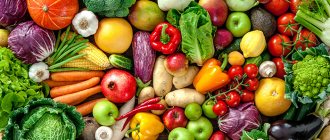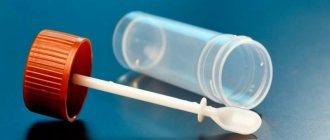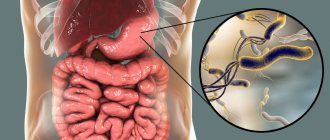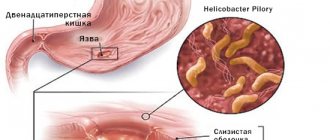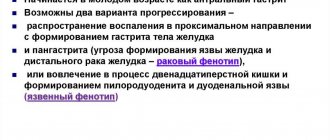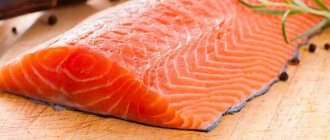All over the world, fish is considered an extremely healthy product.
It is part of diets aimed at losing weight, strengthening the cardiovascular system, and correcting diabetes. For many people, fish has become the personification of a balanced diet and the best substitute for meat. However, is everything so clear regarding patients with gastritis? Let's consider the effect of fish dishes on the gastrointestinal tract.
What is the benefit
The main advantage of fish products is their biochemical composition. They are rich in proteins, optimally balanced in terms of essential amino acids, vitamins (A, D, B) and minerals (iodine, fluorine, zinc, copper). It is these components that determine the beneficial effect of fish on the body:
- regulation of metabolism;
- normalization of cholesterol;
- prevention of cardiovascular diseases;
- stabilization of thyroid function;
- strengthening bone tissue;
- activation of the brain.
Fish generally has a positive effect on the stomach due to its ease of digestion. But its digestibility largely depends on the fat content and method of preparation.
Information. Sometimes fish does more harm than good. Caught in polluted waters, it can become a source of heavy metals and other substances toxic to the human body. And if fish dishes are not properly cooked, there is a risk of infection with parasitic diseases.
Which one to choose
When talking about the properties of fish products, it is necessary to take into account that they are determined primarily by the type of fish. For example, sea fish is considered more useful because it contains more trace elements (especially fluorine and iodine). However, it also contains more extractive substances, which is not beneficial for patients with hyperacid gastritis.
Fat content indicators are very important. According to their size, fish varieties are divided into 3 groups:
- Skinny (up to 4% fat): river perch, pike perch, navaga, hake, pollock, cod, flounder, grenadier, pike, trout.
- Medium fat (4-8% fat): sea bass, carp, pink salmon, salmon, catfish, herring.
- Fatty (over 8% fat): some types of herring, halibut, all sturgeon, lamprey, eel.
For inflammation of the stomach, the permitted fat content is 4% or less. Fatty varieties are rich in polyunsaturated fatty acids and are useful for people with heart and vascular diseases, but their use for gastritis can negatively affect the digestive processes. The calorie content of different types of fish is also very variable. Nutritional value of 100 g of product in increasing order:
- cod – 69 kcal;
- pollock – 79;
- flounder – 83;
- crucian carp – 102;
- sea bass – 122;
- pink salmon – 147;
- sturgeon – 164;
- salmon – 217 kcal.
Is it possible to eat caviar if you have problems with blood pressure and high cholesterol?
According to the nutritionist, nothing bad will happen from eating one sandwich, but you should remember that this product contains salt, so those with high blood pressure should eat caviar with great caution. In addition, it, like other foods high in salt, should not be consumed if you have kidney disease or urolithiasis. One, maximum two sandwiches will be more than enough.
People with high cholesterol can eat red caviar in an amount of no more than one tablespoon per day (10 grams). “Caviar contains cholesterol. Yes, it is compensated by lecithin and Omega-3 fatty acids, but, nevertheless, those who have high cholesterol or severe atherosclerosis should eat caviar in limited quantities - no more than one spoon,” says Solomatina.
How to cook
The method of preparing fish dishes is also important. Smoked, salted, fried, pickled, and canned fish are definitely prohibited for gastritis. Salt, spices and preservatives irritate the gastric mucosa, increasing inflammation. Carcinogenic substances formed during frying and smoking are difficult to digest and provoke the development of cancer.
You can eat salted fish only after soaking or with a slight addition of salt. The fish can be stewed, boiled, steamed, in a slow cooker, or baked in the oven.
It goes well with thermally processed vegetables: potatoes, carrots, onions, zucchini. During the cooking process, many people like to sprinkle the fish with lemon juice, which successfully emphasizes its taste.
If the acidity of the gastric contents is high, you need to be careful with such additives. Of course, a few drops of lemon juice will not cause serious damage, but you still shouldn’t generously cover the fillet with pieces of citrus.
Negative properties of caviar
Caviar is rich in fats, which promotes the production of gastric and pancreatic juices. With inflammation in the stomach, the process provokes deterioration. Excessive secretion of pancreatic juice and hydrochloric acid leads to pain and bloating.
Red caviar increases appetite and stimulates the production of gastric juice, which is harmful if there is increased secretion. And excess calories aggravate chronic pancreatitis and cholecystitis, which often accompany gastritis. It is important to observe moderation.
Regardless of how the caviar was extracted and processed, it contains preservatives and salt. These substances promote the active synthesis of hydrochloric acid and pancreatic juice, which leads to swelling and inflammation of the gastric mucosa.
In the forefront
Some varieties of fish are widely popular and popular among the people. They are present on the festive table and on the daily menu. However, many people don’t even think about how safe they are for the stomach.
Herring
As a rule, herring is salted or smoked.
In the latter case, it is clearly contraindicated in patients with gastritis, regardless of its form. But with salted fish everything is a little more complicated. Since salt significantly stimulates the production of hydrochloric acid, it is better to avoid it if the pH of the gastric contents is low. In hypoacid conditions, you can eat herring only after soaking and in small volumes, since it is a fairly fatty product. It is better to soak it in milk or cooled tea for 8-12 hours. After soaking for twelve hours, the salt concentration in the fish decreases by 3.5 times. This herring should be eaten in combination with neutral foods like mashed potatoes or rye bread.
Advice. You can cook herring yourself in a lightly salted version. Stir 1 tbsp in 3 cups of boiling water. l. salt and 1 tsp. Sahara. Place 2-3 fish in the brine and put them in the refrigerator for a couple of days. The concentration of salt in such herring is very small, so it can be eaten without prior soaking.
Mackerel
This fish is a record holder for the content of omega-3 fatty acids, vitamin B12, potassium and phosphorus.
200 g of fish is enough to meet the daily requirement for these substances. However, mackerel is a fairly fatty and high-calorie fish (191 kcal per 100 g), so it can be eaten with gastritis only during the period of remission. Preferred heat treatment methods: baking, steaming, grilling. This fish is safer for patients with hyper- and normoacid inflammation of the stomach, since in conditions of a sufficient (and even excessive) amount of gastric juice it can be completely digested, despite its fat content. And with reduced gastric secretion, when the digestion process is difficult, the amount of mackerel consumed should be limited to one small piece per day.
red fish
Red fish is an extremely healthy product. It is widely used for preparing dishes as part of the Mediterranean diet, which, in addition to fish, includes fresh vegetables and fruits, grains, and olive oil.
Important! It has been proven that if you eat red fish at least once a week, the risk of developing a heart attack is reduced by more than 2 times, and stroke by 22%. In addition, it was noted that residents of coastal areas are less likely to suffer from iodine deficiency.
However, not all red fish are good for gastritis. Fatty varieties such as salmon, chum salmon, and salmon should be avoided. They can be used only during the period of remission by patients with preserved acidity. At elevated pH values, trout is more preferable - this is the most dietary variety of red fish.
Cooking fish should follow the general rules: steamed, in the oven, in a slow cooker. Smoked and salty foods are prohibited. Lightly salted trout can be eaten in small quantities for hypoacid gastritis.
Caviar
When talking about delicious varieties of fish, one cannot fail to mention caviar.
This product is very beneficial for the body due to the content of proteins with a complete amino acid composition, fatty acids, lecithin, minerals, and vitamin A. The negative side is the high concentration of cholesterol in caviar and its ability to stimulate the secretion of digestive juice. That is why the product is prohibited for acute, chronic hyperacid and erosive gastritis.
In hypoacid conditions, it must be strictly limited (no more than 50 g per day) due to the high fat content of the product. And of course, you shouldn’t eat it as part of a sandwich generously greased with butter. It is better to add caviar to dietary salads and sauces. If you absolutely want to make sandwiches with caviar, then you need to take rye bread and replace the butter with soft, low-fat cheese.
You need to be very careful with industrially produced salted caviar. Firstly , it is often too salty. Secondly, it is usually sold in cans, which contain substances that are toxic to the stomach.
The safest way is to salt the caviar yourself. To do this, you need to boil water with 60 g of salt and a couple of bay leaves. Pour brine over the caviar, cleared of films, and soak in it for 20-30 minutes. Then drain the liquid through a sieve, let it drain well, and place the caviar in a glass container. This way you can prepare red caviar, pike caviar, carp caviar, cod caviar and other river or sea fish. It can be stored in the refrigerator for no more than 3 days.
Eating red caviar for gastritis with different types of acidity
With regular consumption of red caviar, the likelihood of developing cardiovascular diseases is significantly reduced, since due to improved blood circulation, the risk of blood clots is reduced. And the harmful cholesterol contained in caviar is practically neutralized by beneficial lecithin, which not only reduces the amount of cholesterol in the blood, but stimulates the immune system and slows down the aging process.
Since caviar is not fatty, there is no danger to the stomach on this side. The risk is borne by the preservative – salt. It irritates the mucous membrane and causes increased secretion of digestive juice. A large amount of hydrochloric acid will accelerate the activity of the inflammatory process, therefore, in the acute stage of gastritis, red caviar is prohibited.
The reason for the prohibition is eliminated by washing the caviar with clean water. This procedure can significantly worsen the organoleptic properties of the product; it is unlikely that anyone would call unsalted caviar a delicacy. You can eat red caviar for gastritis with high acidity, but only in remission and little by little. It is better to forget about your favorite trio of white bread, butter and a thick layer of red caviar, since this combination provokes the secretion of gastric juice too much.
Red caviar for gastritis with high acidity can be eaten, but only in remission and little by little
Patients with gastritis with reduced secretion of gastric juice are allowed to consume red caviar, but during the period of exacerbation of the disease it is better to refrain from this. An increase in the activity of the glands during remission will have a beneficial effect on the process of digesting food.
Recommendations for consuming caviar for gastritis
The negative side is the high concentration of cholesterol in caviar and its ability to stimulate the secretion of digestive juice. That is why the product is prohibited for acute, chronic hyperacid and erosive gastritis.
In hypoacid conditions, it must be strictly limited (no more than 50 g per day) due to the high fat content of the product. And of course, you shouldn’t eat it as part of a sandwich generously greased with butter. It is better to add caviar to dietary salads and sauces. If you absolutely want to make sandwiches with caviar, then you need to take rye bread and replace the butter with soft, low-fat cheese.
You need to be very careful with industrially produced salted caviar. Firstly, it is often too salty. Secondly, it is usually sold in cans, which contain substances that are toxic to the stomach.
How to pickle caviar recipe
The safest way is to salt the caviar yourself. To do this, you need to boil water with 60 grams of salt and a couple of bay leaves. Pour brine over the caviar, cleared of films, and soak in it for 20-30 minutes. Then drain the liquid through a sieve, let it drain well, and place the caviar in a glass container. This way you can prepare red caviar, pike caviar, carp caviar, cod caviar and other river or sea fish. It can be stored in the refrigerator for no more than 3 days.
Sources:
- https://gastritinform.ru/uifsa.ua/about-fish/interesting-articles-about-fish/red-caviar-and-its-types
- https://gastritinform.ru/chtomozhno.ru/pitanie-pri-gastrite/mozhno-li-krasnuyu-ikru-pri-gastrite.html
- https://mi-msk.ru/eda/raznoe/ikra-pri-gastrite.html
- https://jktblog.ru/zabolevaniya-zhkt/gastrit/krasnaya-ikra-pri-gastrite.html
- https://medbrat.online/zheludok/gastrit/pitanie/ryba.html
Post Views: 2,355
For different forms of the disease
In the acute stage of the disease, it is allowed to eat skinny fish in the form of steam cutlets with a minimum amount of salt. As the exacerbation subsides, the diet gradually expands, and the possibility of consuming fish products is determined by the type of acidity.
With normal and hyperacid inflammation, you can eat lean and medium-fat varieties of fish. Enough has already been said about the methods of their preparation; they do not depend on the specific type of inflammation. You can cook the fish as a whole piece; it is not necessary to mince it. The amount of spices and oil must be strictly regulated. It is allowed to sprinkle the fish with a little olive oil during cooking.
For erosive gastritis , the same fish varieties are allowed, but it is better to make boneless cutlets or fillets from them so as not to injure the surface of the erosions. With this type of inflammation, salted (even lightly salted) fish is strictly prohibited.
Against the background of a hypoacid and atrophic process, preference should be given to low-fat fish products without adding oil. With a low concentration of hydrochloric acid and digestive enzymes, fatty foods are not completely digested, rotting processes in the stomach begin, and inflammation intensifies.
Compare with meat
Proteins of fish origin are absorbed faster and easier than meat proteins.
If on average it takes 2-3 hours to digest fish in the stomach, then for most types of meat it will take 5-6 hours. At the same time, the fish is digested almost completely, and the meat is only 85%. Compared to meat, fish products have lower calorie content and a low concentration of extractive substances that stimulate the production of gastric juice. Therefore, for hyperacid forms of gastritis, fish is safer. The lower content of connective tissue fibers makes it possible to include fish in the diet in uncrushed form, while meat for gastritis is recommended to be minced.
However, it should be noted that fish dishes are more palatable than meat dishes. Therefore, they are not recommended to be included in the daily menu. The optimal frequency of eating fish is 3 times a week. In terms of vitamin and mineral composition, fish and meat are not rivals, but allies. In both products, the content of useful chemical compounds is quite high; they harmoniously complement each other.
Experts' opinion. When asked what is healthier for the body - fish or meat, nutritionists answer unequivocally: both. Alternating meat and fish dishes in the diet is the basis of a balanced diet.
Is it possible to eat red caviar with gastritis?
In the acute period of gastritis, eating the product is not allowed: caviar negatively affects the gastric mucosa. If chronic inflammation of the gastric mucosa is in remission, red caviar can be consumed, but not often and in small quantities. Precautionary measures are due to the fact that the dish contains fats, cholesterol, sodium and chlorine ions, which stimulate the production of hydrochloric acid in the stomach. This leads to a worsening of the condition in a chronic pathological process.
Patients with gastritis with low acidity can include the product in their diet. Red caviar increases appetite and stimulates the production of gastric juice, which is harmful if there is increased secretion. And excess calories aggravate chronic pancreatitis and cholecystitis, which often accompany gastritis. It is important to observe moderation.
Regardless of how the caviar was extracted and processed, it contains preservatives and salt. These substances promote the active synthesis of hydrochloric acid and pancreatic juice, which leads to swelling and inflammation of the gastric mucosa.
Features of consuming red caviar for gastritis:
- It is forbidden to eat caviar on an empty stomach: you need to eat dietary products that are safe for the stomach;
- For consumption, it is necessary to choose a high-quality product: in some cases, caviar is harvested by entrepreneurs in artisanal conditions with violations of technology and sanitary standards. With this method of extraction and preparation, the product loses its beneficial qualities and harms even a healthy body;
- a patient suffering from gastritis or pancreatitis is allowed to consume no more than 1 tablespoon of caviar per meal (without a slide);
- red caviar is obtained from fish of the salmon family, but it is allowed to consume caviar from other types of fish: pike caviar is inferior to salmon in taste, but has fewer side effects.
Recipes
We invite you to prepare dishes that can be eaten for any form of chronic gastritis.
Pike-perch in leek leaves
Compound:
- 400 g pike perch;
- 7 leek leaves;
- 2 onions;
- 1 tsp. lemon juice;
- 3 sprigs of dill;
- 2 tbsp. l. olive oil;
- salt to taste.
Action plan:
- Cut the onion into cubes and simmer in a frying pan until transparent.
- Finely chop the dill.
- Throw leek leaves into boiling water, cook for a couple of minutes, place in a colander and rinse with cold water.
- Cut the pike perch fillet into 2 parts.
- Place 3-4 leek sheets overlapping each other on a cutting board.
- Place the fish on top, lightly salt and sprinkle with lemon juice.
- Place stewed onions and dill on the fillet.
- Wrap the pike perch in onion leaves and place in a covered dish greased with olive oil.
- Bake in the oven for 20 minutes at 180 degrees.
Steamed fish cutlets
Compound:
- 500 g fillet of any lean fish;
- 50 g stale bread;
- 100 ml skim milk;
- 100 g onions;
- 1 egg;
- salt to taste.
Action plan:
- Pass the fish fillet and onion through a meat grinder.
- Soak the bread in milk, chop and mix with minced meat.
- Add egg and salt to taste.
- Form into cutlets.
Cook them in a double boiler or multicooker (in the “Steam” mode) for about 20 minutes.
